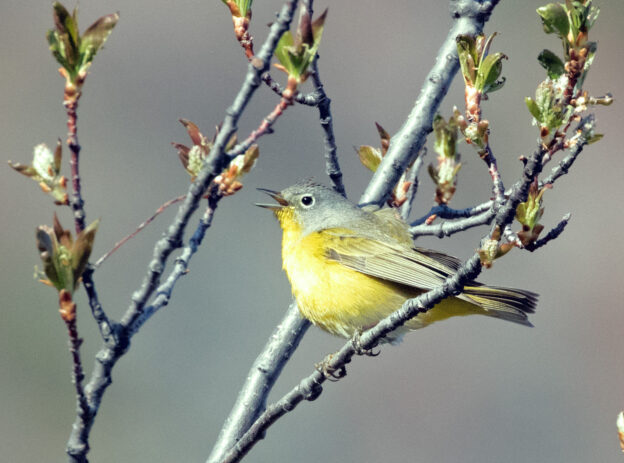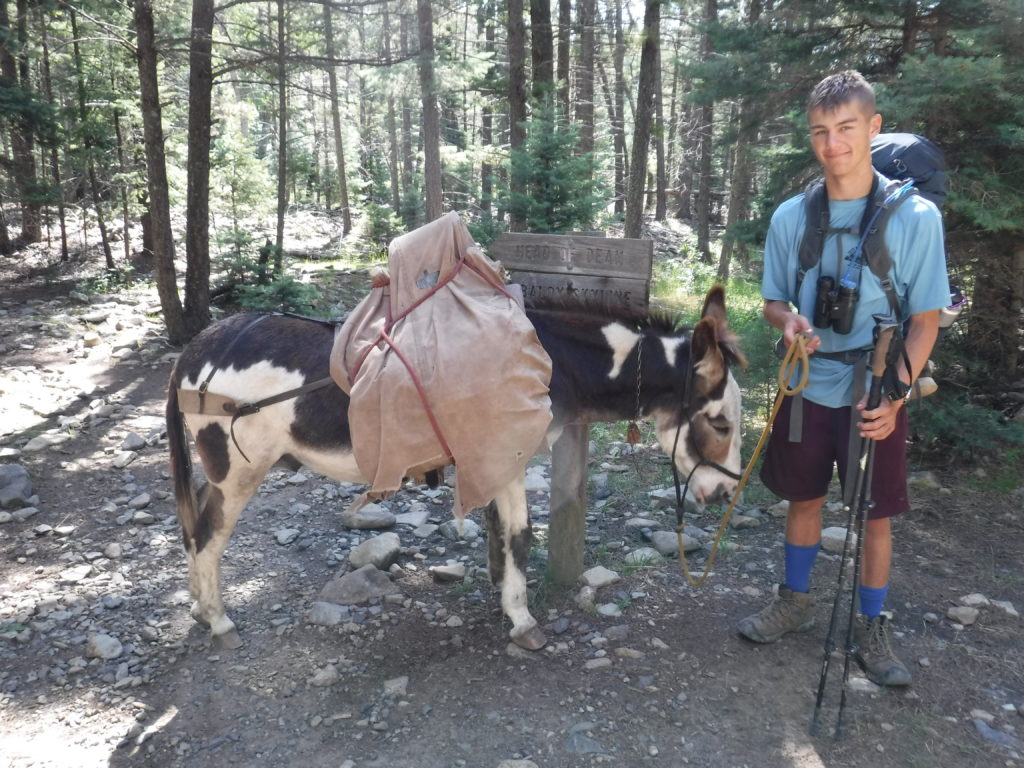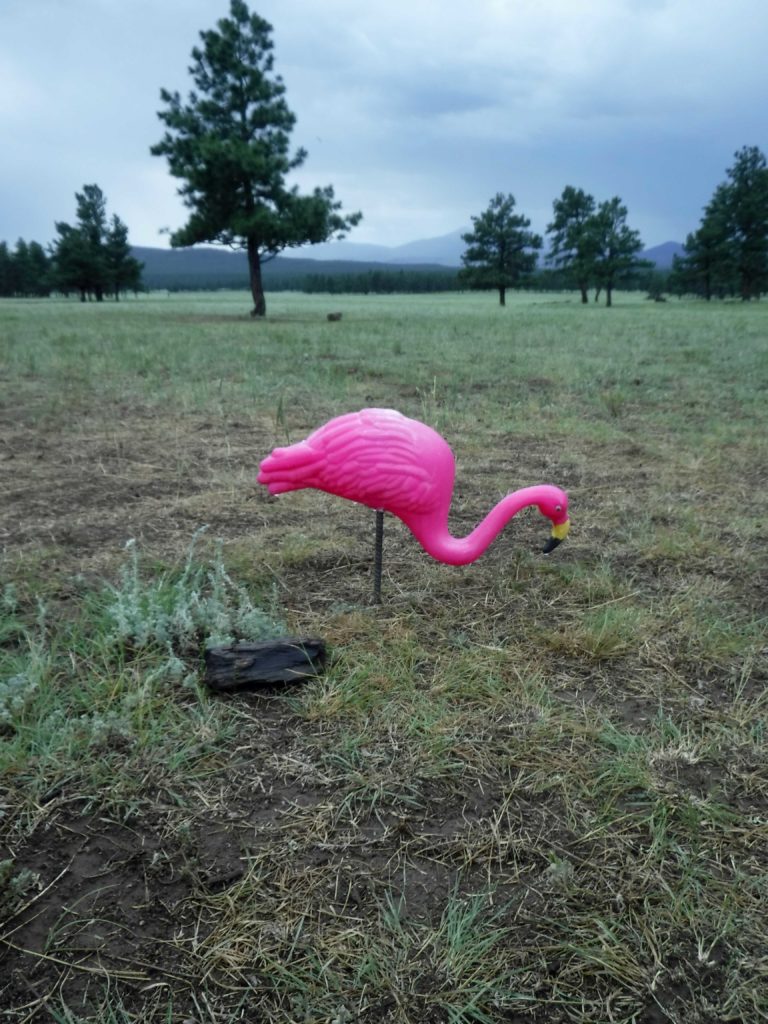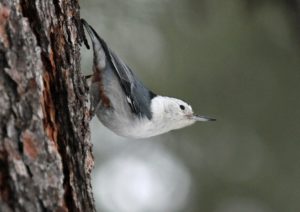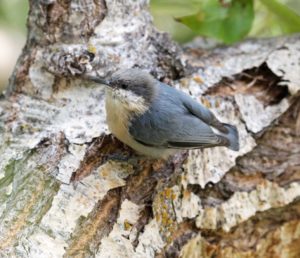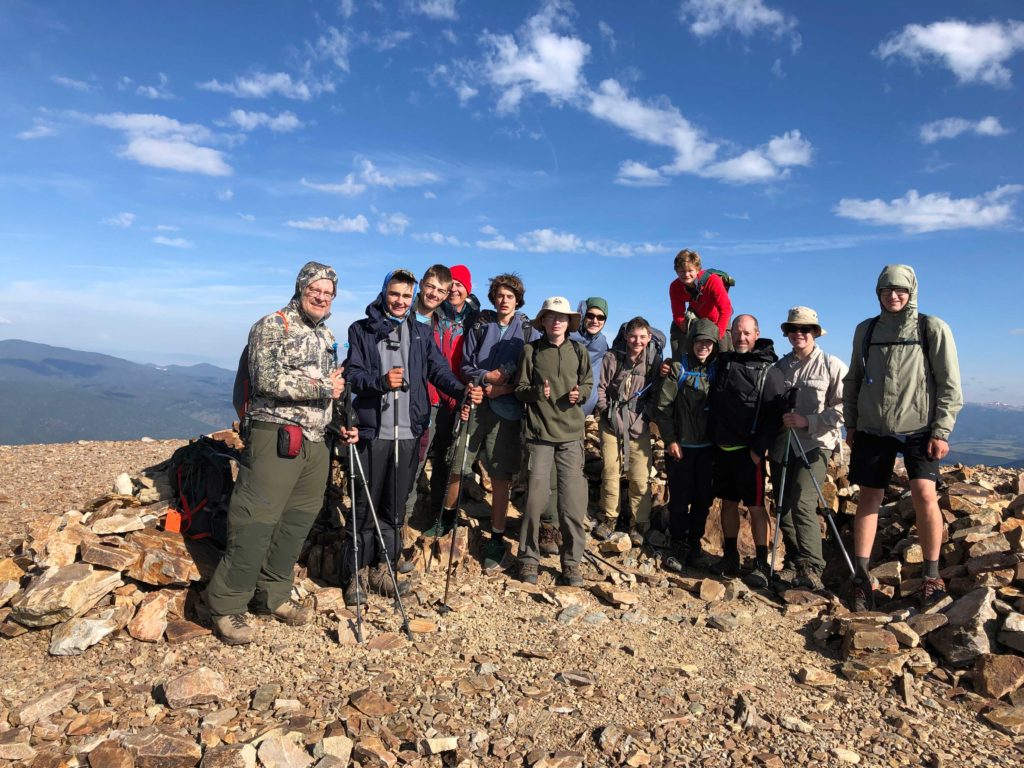Braden and I write FatherSonBirding in the hopes of sharing the wonders of birds and birding, and the urgency to protect them. We do not accept advertising or donations, but if you’d like to support our work, please consider buying *NEW* copies of some of Sneed’s books—First-Time Japan, for instance, or my picture book for younger readers, Birds of Every Color. We appreciate your interest and hope you will keep reading!
The birds are back! Well, at least a lot of them. Last weekend, our dog Lola and I hiked our favorite four-mile loop from our house up to a ridge called the Mount Jumbo Saddle and then back down past what has become my favorite “bird thicket” in Missoula. We first began hiking this route when I was training to take Braden’s scouting troop to Philmont Scout Camp in 2019. Honestly, Lola isn’t crazy about the route since she hates loud noises and we often hear guns firing from a range a couple of miles away. I keep making her do it, though, because I’ve discovered that it’s a great way to keep up with the neighborhood bird community, especially in spring. The past couple of years, I’ve tried to do this route on a regular basis, carefully recording new arrivals and learning more about their migration patterns.
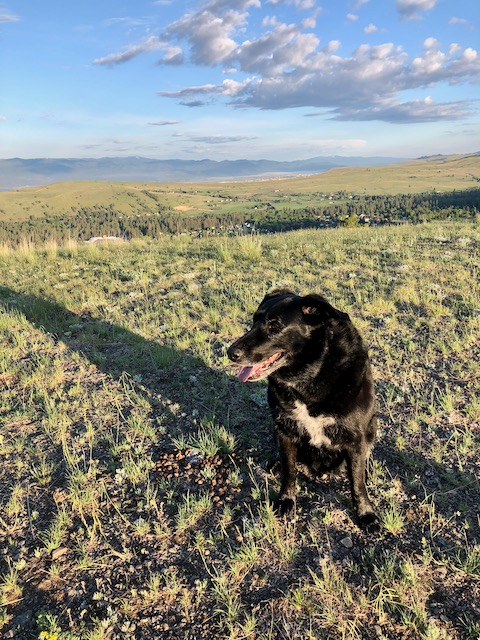
Songbird migration builds slowly here in Montana. This year in late March, I noted the first Western Meadowlarks, Western Bluebirds, and Spotted Towhees on the route—but four weeks later, April 21, not much had changed. Two weeks after that—yesterday—the dam broke. I set off up the hill hoping to see perhaps the year’s first Vesper Sparrows, but quickly discovered that new arrivals were spouting off everywhere I turned. It began halfway up Jumbo Saddle when I heard a song that reminded me of a Western Meadowlark and I guessed that it was my season’s first Vesper Sparrow. The problem? I didn’t know for sure—a situation faced by millions of birders who have not, or cannot, learn more than a few bird vocalizations.

What to do?
In the past couple of years, I have developed a strategy for dealing with these situations—one that might help you, too. It used to be that when you heard a song or call that you couldn’t identify, one’s options were limited. You could just guess, and play various bird calls on your app, hoping to land on the right one. You could record the call and play it back to an expert. More often, you’d try to follow the song and get a visual on the bird to see what it was. Unfortunately, all of these methods are slow and cumbersome, and in spring, well, there are just too many vocalizations to keep up with.
And then along came Merlin’s Sound ID feature.
Sound ID is (almost) every birder’s dream. You simply tap a button on the Merlin phone app and it begins recording and identifying the songs and calls around you in real time. The app is not infallible. You have to be fairly close to birds for it to pick up and identify them, and the app has difficulty handling background noises such as wind, rushing streams, and cars roaring by on a freeway. The app also makes mistakes. Starlings, mockingbirds, and Steller’s Jays can fool it with their imitations of other birds. If the app only picks up part of a call, it sometimes can mistake one bird for another. The bottom line: you should never use the app alone to identify a bird.
So how do you make proper use of it? I employ it in two ways.
Strategy One: Confirmation
The first is to confirm a song or call that I may be somewhat familiar with—but am not 100% sure about. The putative Vesper Sparrow in the second paragraph is a perfect example. In past years, I had learned that a Vesper Sparrow kind of sounds like the call of a Western Meadowlark—but a bit simpler and cruder. When I heard a “somewhat meadowlark” call near Mount Jumbo Saddle, I immediately thought “Vesper Sparrow” but couldn’t be sure, so I started Sound ID. Sure enough, the song lit up as Vesper Sparrow. Other things made me confident about this ID, too. The timing was right from previous years. Most important, I was standing in perfect Vesper Sparrow habitat—open meadows with tall grass and scattered perching shrubs.
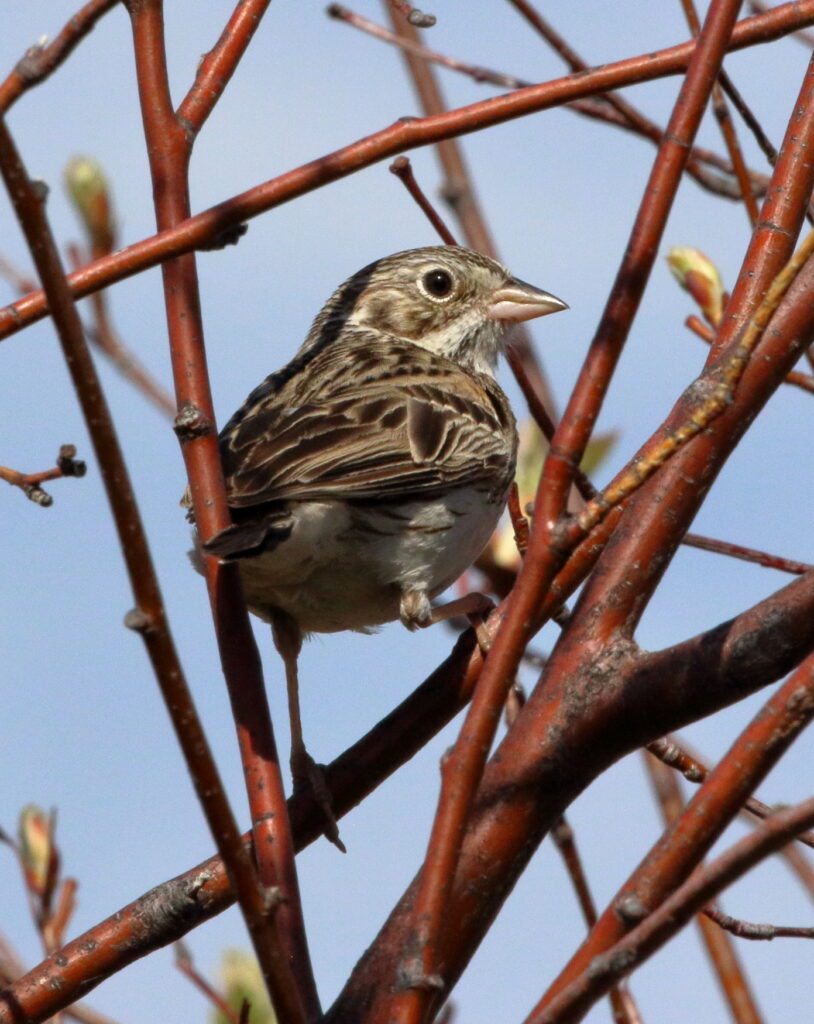
As my hike continued, in fact, I used Sound ID to confirm several other birds in this way, including Steller’s Jay and the year’s first Chipping Sparrows and Yellow-rumped Warblers. Things were about to get more challenging, however.
Strategy Two: Possible Presence
Not long after hearing my first (and second, third, and fourth) Vesper Sparrow, I reached a nice brushy area where Braden and I have heard Orange-crowned Warblers in previous years. Unfortunately for me, I have a very difficult time distinguishing one warbler song from another. I usually recognize Yellow-rumped Warblers when they first show up, but as other species arrive they plunge me into, in the words of Sir Topham Hatt, “confusion and delay.” This morning, I could hear what sounded like warblers—but I didn’t know which ones.
Again, Sound ID comes in very useful in these situations because it can give you an idea of what to look for. I started a new recording and the app failed to come up with any Orange-crowned Warblers. It did, however, identify Yellow-rumped, Yellow, and most exciting, Nashville Warblers! I did not log any of these on eBird, however—not right away. Because I am not good with warbler songs, I needed to confirm these in at least one or two other ways.
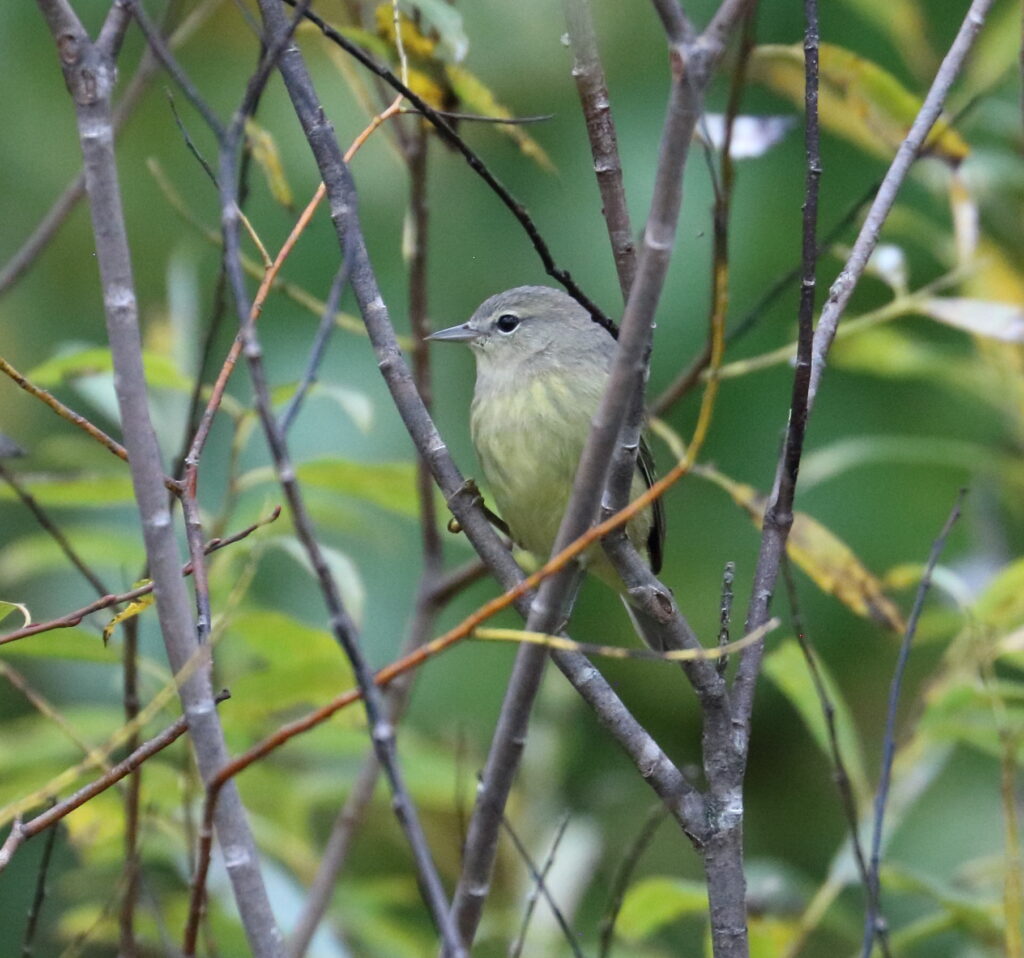
One is to compare what you are hearing with known recordings on other apps. If what you are hearing is identical to vocalizations in the Merlin sound library or on the Sibley app, depending on your experience, I feel confident that you can go ahead and record the bird—again keeping in mind the caveat that some birds imitate others.
Still, I only do this when I am really sure the two songs are the same—understanding that bird songs from the same species can vary tremendously. If I have any doubts, I wait to log a bird on eBird until I have confirmed it with a visual sighting or by running it past an expert. With this technique, Sound ID isn’t cinching the identification for me, but it is helping me a lot by giving me a better idea of what to look for.
This morning, however, I could not find any of the three warblers in the first thicket, so Lola and I kept hiking. Ten minutes later, I spotted a Yellow-rumped Warbler in a tree—and recorded it—but it was the Nashville Warbler I was really after.
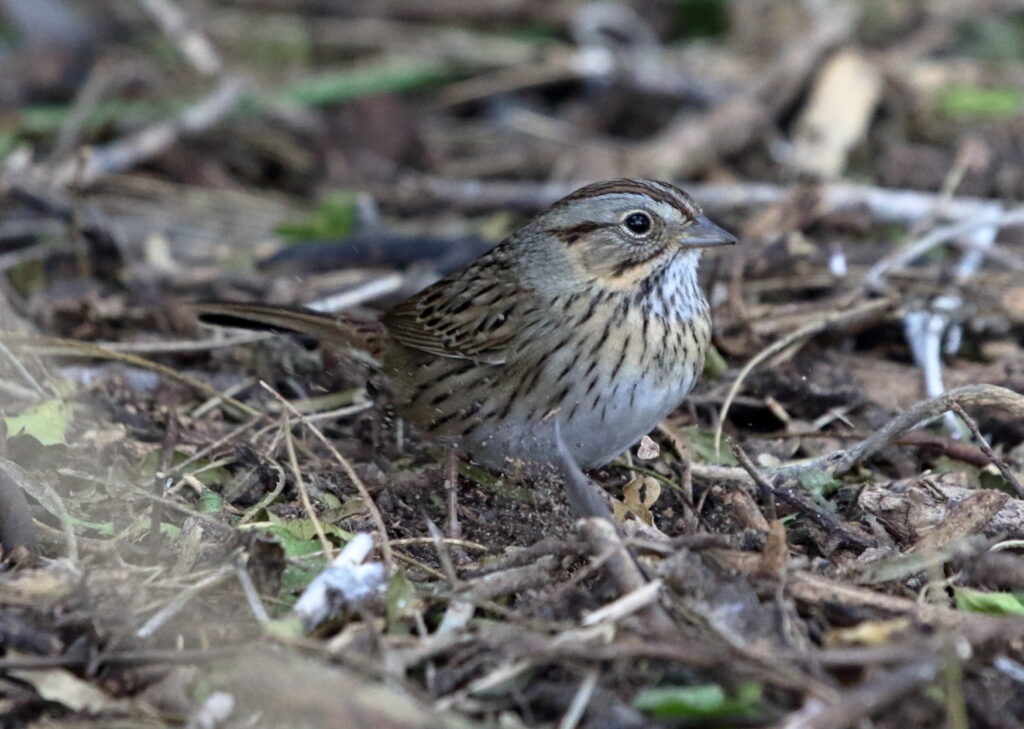
Eventually, I came to another thicket, and here I was thrilled to see my first Lincoln’s Sparrow of the year. Just as enticing, I also was hearing warbler sounds all around me so I turned on Sound ID once again. This time, Orange-crowned and Nashville songs started lighting up Sound ID like a pinball machine. Thanks to the app, I was quickly able to distinguish the two species by ear, and I confirmed these by playing other recordings on the Merlin library. Soon after, I actually saw the birds for myself. Yes! I thought, and finally logged them onto eBird.
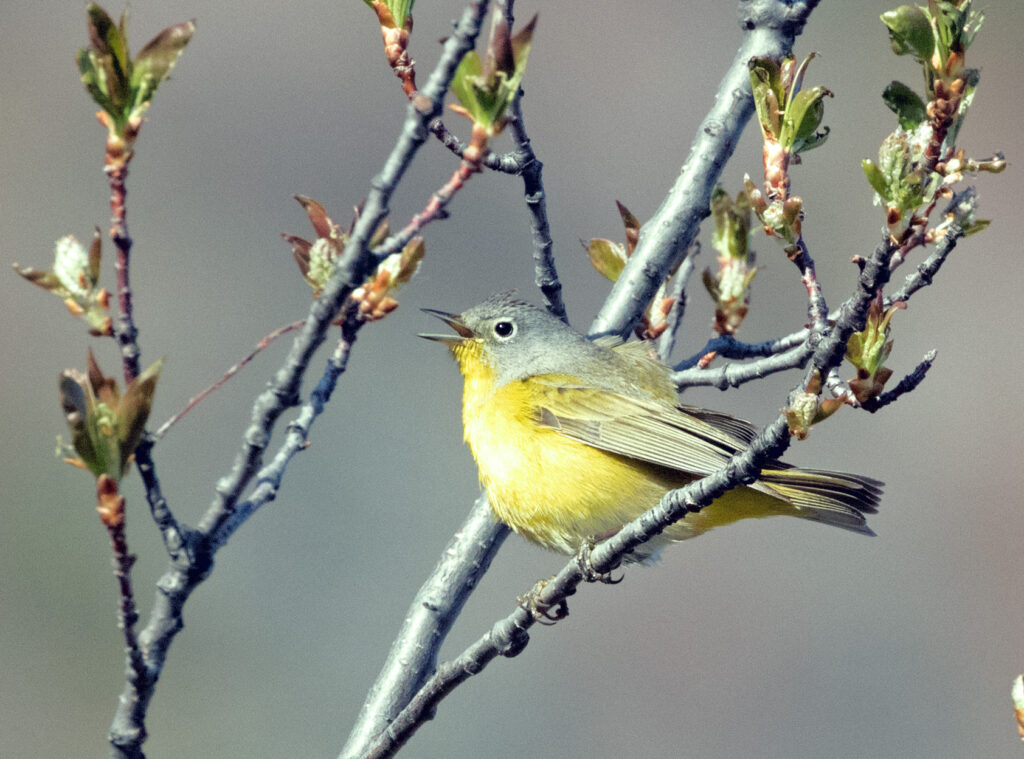
All together, Lola and I saw eight new first-of-year species on our hike. For several of them, Sound ID not only helped me identify them, it alerted me to look for them in the first place. I want to emphasize, however, that Sound ID is not a substitute for putting in the hours to learn and identify birds yourself. Recently, Cornell has issued friendly cautions not to rely on it as your sole basis for identification. Instead, I consider Sound ID a wonderful “helper tool” that can especially assist beginning birders, as well as more experienced birders like myself who just find it difficult to learn vocalizations. And did I mention the Merlin app (with Sound ID) is free? Cornell Lab, the app’s developer, has generously made it available to anyone who wants it. Even better for our international readers, Cornell Lab is rapidly expanding what the app can identify to countries around the globe. All you need is a phone. Learn more at https://merlin.allaboutbirds.org/.
Checklist 1: https://ebird.org/checklist/S172160962
Checklist 2: https://ebird.org/checklist/S172176329

